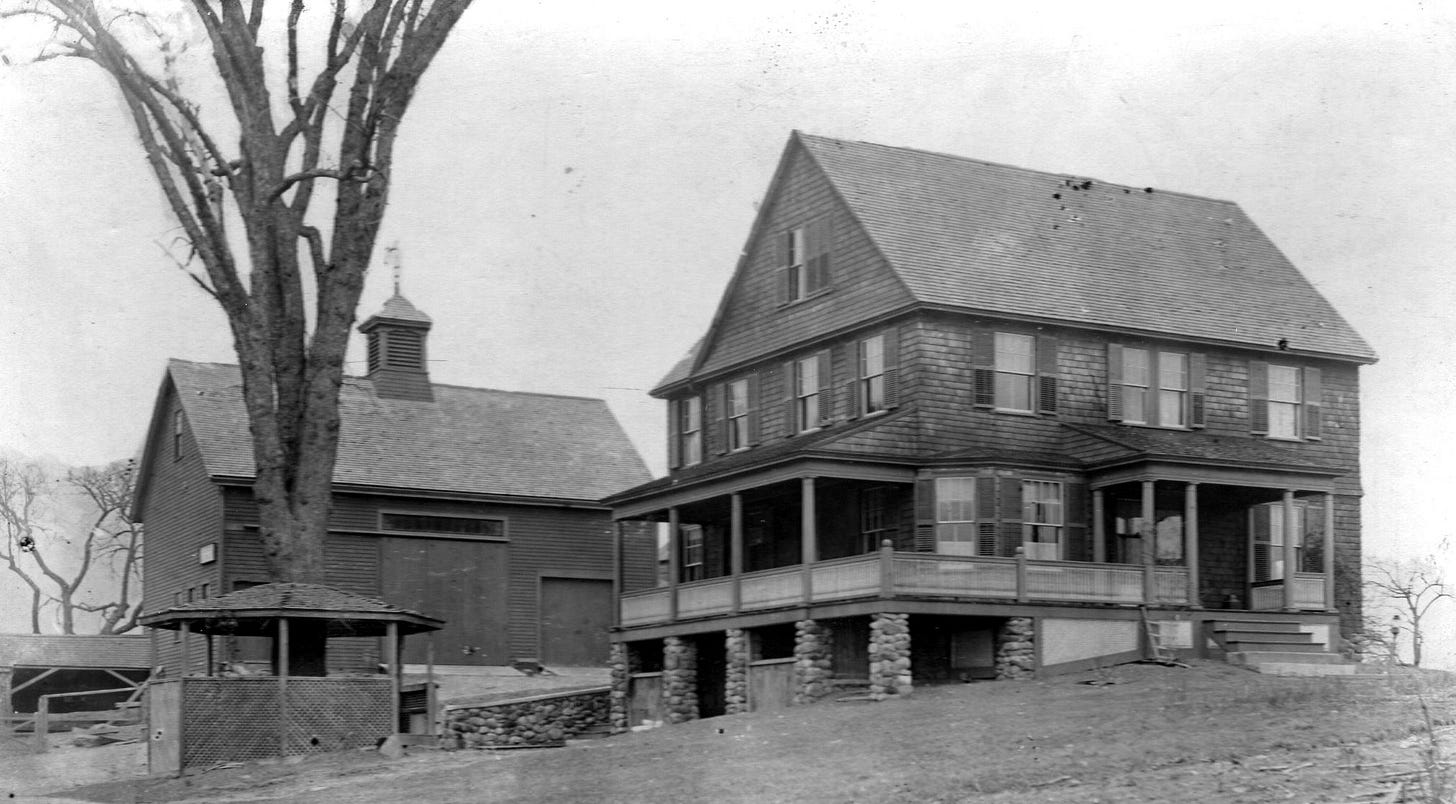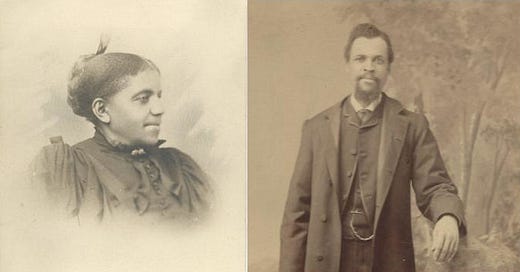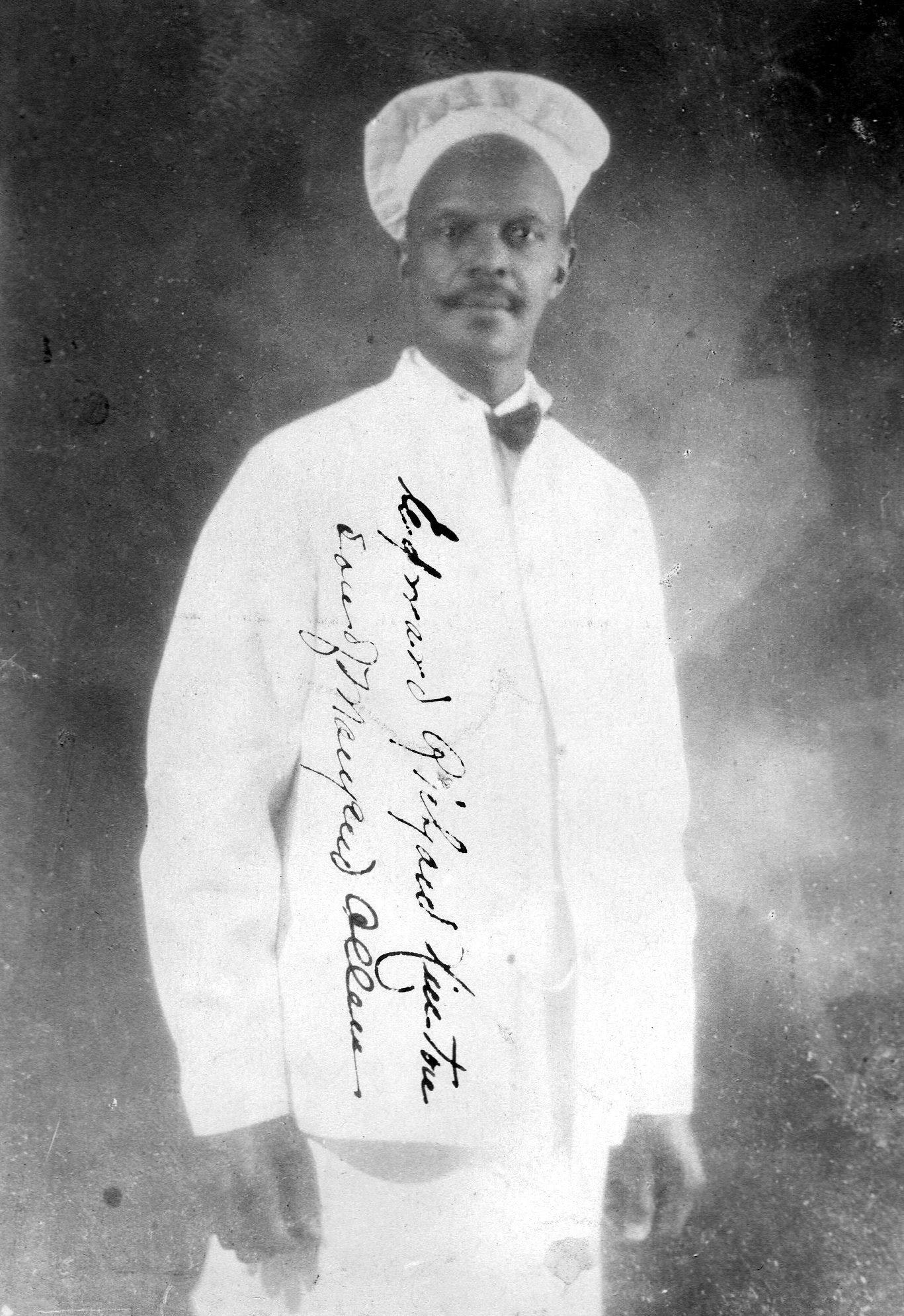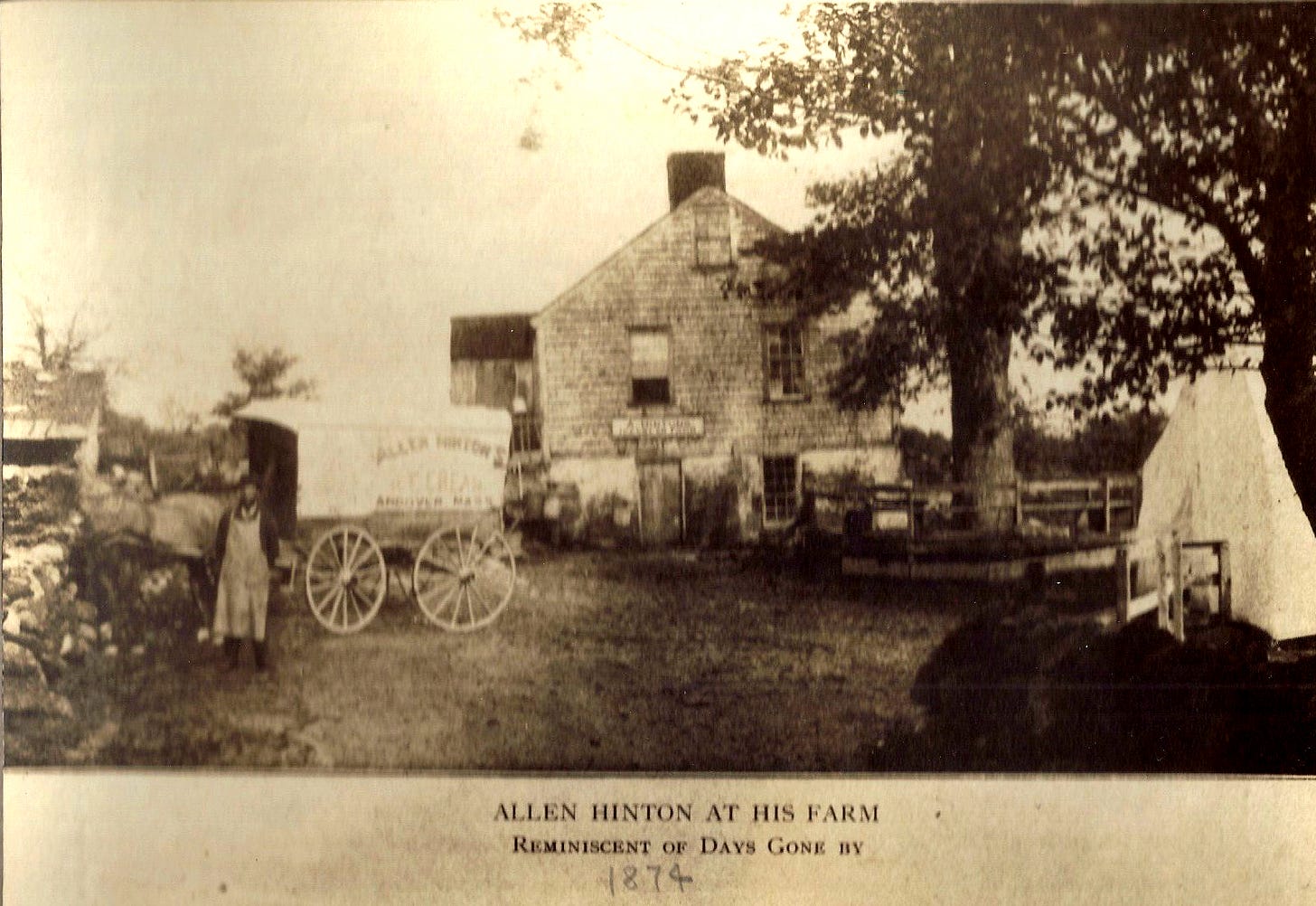Miscellany Mondays: Along Hidden Road (pt3) Allen & Mary Hinton, ice cream entrepreneurs
by Guest Writer Barbara Bunn
Allen and Mary Hinton
Much of what we know about the Hinton family was written by Allen and Mary’s daughter Alice Hinton, who donated photographs and her family history to the then Andover Historical Society in 1938.
Allen Hinton was one of 15 children, all born into slavery in North Carolina. In 1864 he moved to Andover. He had many different jobs, but his most successful business was selling snacks from a wagon to Phillip and Abbot Academy students.
In 1867, Allen met and married Mary Jane Patmore Johnson. Mary was a widow with one son, Charles, when she and Allen married. Together, they would have three more children: Alice, Albee (who died young), and Edward.
Mary worked taking in laundry while Allen waited tables at the Andover Theological Seminary. Mary was also cook for Phillips Academy Professor Joseph Thayer.
After a time, the couple was able to rent a farm at 104 Hidden Road. In addition to waiting tables and doing laundry, Alan started a business selling popcorn snacks to Phillips Academy and Seminary students.
In a family history written for the History Center in 1938, daughter Alice Hinton wrote,
…in 1877 a hungry boy living at the Berry House on Salem Street, suggested ice cream as a good selling article.
Mary had learned to make ice cream while working for Professor Thayer, so she created an ice cream recipe using milk from their Jersey cows. The first flavors were lemon and vanilla.
The business took off
Allen drove around Andover ringing his bell and selling ice cream from his wagon, specially created for him by William Poor in his Poor Wagon Shop located in Frye Village. He visited the Theological Seminary and Phillips, as well as Abbot Academy, twice per week. Students would come pouring out of the buildings for his ice cream. On other days he did the circuit through town. Gradually he added Lawrence and North Reading to his route. Hinton ice cream was very popular.
By 1900, they were selling hundreds of gallons of ice cream from their wagon and home.
“The ambition of my parents had been to own their home and the farm was the wished-for place. Patiently we did wait for its possession.” ~Alice Hinton
In 1901, Allen was able to purchase the farm where he had been a tenant.
…we soon heard the auctioneer’s hammer as he said, ‘Sold to Allen Hinton for $525.’ Each of us realized with joy that at last we had a home.
Alice wrote, “Father’s first thought was for the welfare of his patrons” so Allen immediately added a farm house and an ice house. He also built a small ice cream pavilion and a seat that wrapped around a large elm tree in the yard.
From a recollection by Mary Byers Smith in the files of the History Center we learn that the pavilion, “was the principal rendez-vous of Phillips and Abbot students.” How many romances blossomed in the ice cream pavilion?
(Phillips Academy was an all-boys’ school, while Abbott Academy was a an all-girls’ school.)
In 1904, Allen contracted local architect Perley F. Gilbert to design and build a new home on the property. Gilbert had been a high school classmate of Alice Hinton, graduating from the Punchard High School in 1889.

Hinton Ice Cream Farm was a well-established business. The trolley line stopped nearby on South Main Street near where the Phillips Academy bell tower is, so it made for a short walk to the farm. Sunday was their busiest day.
Alice wrote,
The automobiles also helped us and as many as sixty to eighty gallons of cream were sold on pleasant Sundays. It amused me very much to be able to announce the flavors to new-comers, for we now served eight creams besides sherberts, and then see the helpless look on their faces as they would meekly say, “GIVE ME VANILLA.”
To the ever-popular vanilla, they added flavors such as strawberry, chocolate, tutti frutti, and ginger. Later they added “fancy creams” Strawberry Parfait, Cafe Parfaits, Bon Glace, Mousse, and Sultana Roll with Claret Sauce (you can read the recipe on page 377 of the 1896 Boston Cooking-School Cook Book by Fannie Farmer).
Allen passed away in 1912 and his obituary states that he was “conscientious and respected by all.” His wife, Mary died in 1921 and the entire farm and business, valued at $5,300, passed to their children, Alice and Edward. Shortly thereafter, Edward sold his share of the estate to Alice. Alice dove into making improvements to the business.
However, in 1923, the property was sold to Lewis and Mary Greenwood.
We’ll continue Alice Hinton’s story in the next installment of the Hidden Road story.
Many thanks to History Buzz Guest Writer Barbara Bunn for contributing to this article!
Hinton family photos
Resources:
Records of the National Negro Business League, 1900-1923
Report of the 16th Annual Convention of the National Negro Business League, 1915, 104-110, Alice Hinton’s speech
Alice Hinton’s remembrances, ACHC collection
The Boston Cooking-School Cook Book, Fannie Merritt Farmer, 1896














This is wonderful to read! I'm eager to read the next installment.
Thank you for sharing this story.